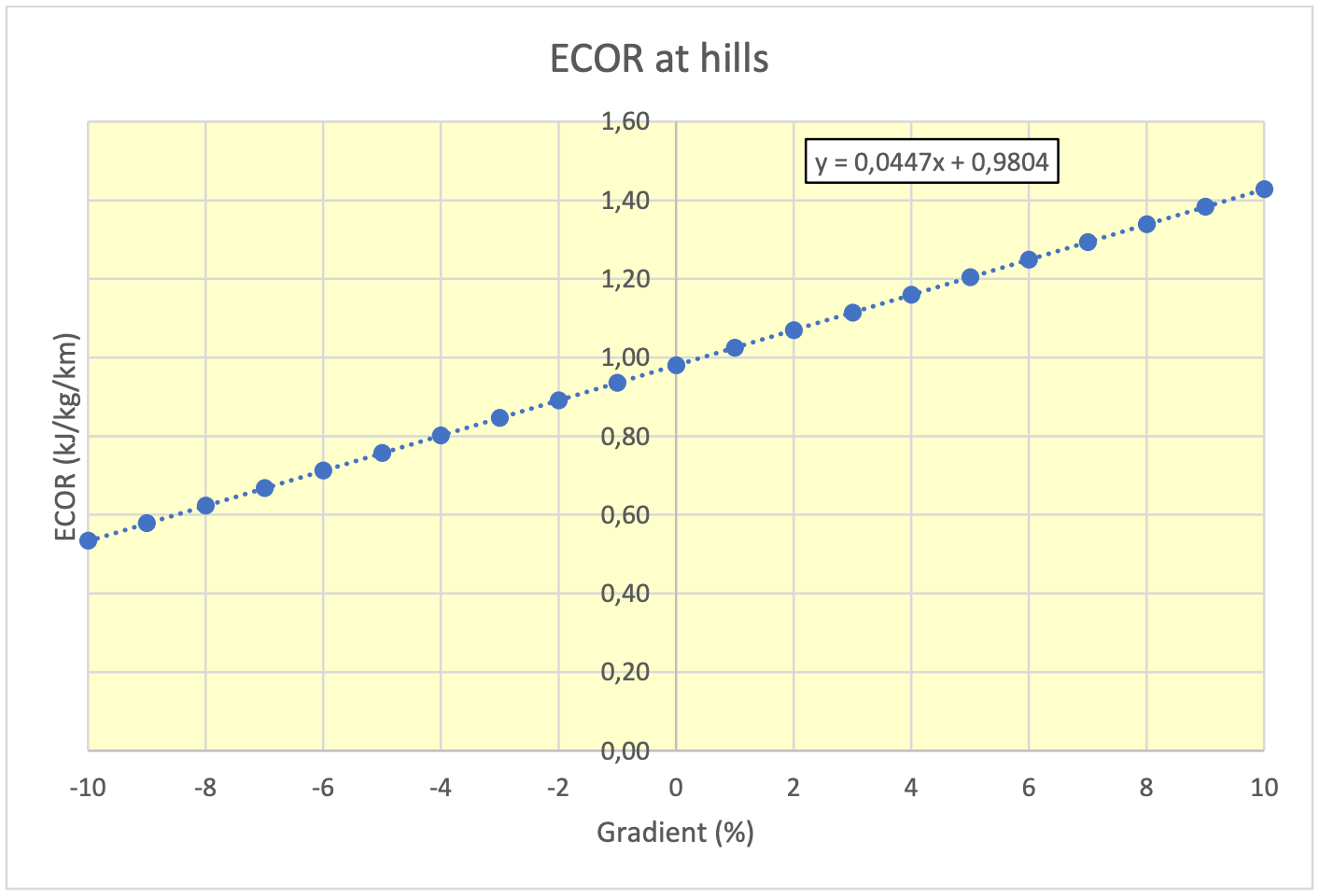The cost of running up and down hills

In our book (www.thesecretofrunning.com) we have discussed the Energy Cost of Running (ECOR) in several separate chapters.
First, we have shown that on a level and hard course, the ECOR is typically 0.98 kJ/kg/km. Of course, this number will not be the same for everyone: it depends on the running style and every runner should try to optimize this in order to reduce his ECOR. Obviously, the Stryd gives us the tool to do this as can calculate our ECOR on a daily basis:
ECOR (in kJ/kg/km) = Specific power (in Watt/kg) divided by the speed (in m/s)
Generally, it is believed that the ECOR of highly efficient elite runners could be some 10% lower and the ECOR of inefficient joggers could be some 10% higher than the typical value of 0.98 kJ/kg/km. So far, we have seen that our own data and those of many other runners are quite close to 0.98 kJ/kg/km.
The impact of hills on the ECOR according to theory
As a result of gravity, the ECOR is increased uphill and decreased downhill. In our book we have shown that this effect can theoretically be calculated as a function of the gradient i (in %) by the formula:
ECOR= 0.98+ i/100*9.81*(45.6+1.16*i)/100
We have calculated the ECOR in accordance with this formula, the results are shown in the below table and figure.


The table and figure show clearly that hills do indeed have a big impact on the ECOR!
The impact of hills on the ECOR in practice
We did an experiment to validate these theoretical calculations. Both authors (Hans and Ron) ran uphill and downhill a nearby hill with a length of 1 km and a gradient of 3.7 % (so the total altitude difference was 37 meters). We ran 2 times uphill and 2 times downhill, with a few minutes recovery in between. We used our Stryd foot pod to monitor our power and we tried to run at our FTP-level, which is the amount of power that you can maintain for 1 hour. The FTP of Hans is 245 Watt or 4.22 Watt/kg and for Ron these data are 300 Watt and 3.75 Watt/kg. The results are shown in the table below.

As can be seen from the table, we did not quite manage to maintain our FTP downhill. As other experienced runners will confirm, this is due to the fact that stride length and cadence limit the possible speed downhill. The table also confirms the obvious facts that uphill stride length, vertical oscillation, FP, and LSS are reduced. Downhill the reverse is the case.
The most important result is that the data clearly confirm that the ECOR is substantially higher uphill and substantially lower downhill. As a matter of fact the actual values are remarkably close to theory as summarized in the table below. We were quite impressed by the fact that the Stryd power data represented the impact of the hill accurately and in accordance with theory.

If you would like to purchase The Secret of Running (or the German version, Das Geheimnis des Laufens), you can do so at the bottom of store.stryd.com.

